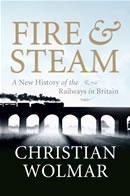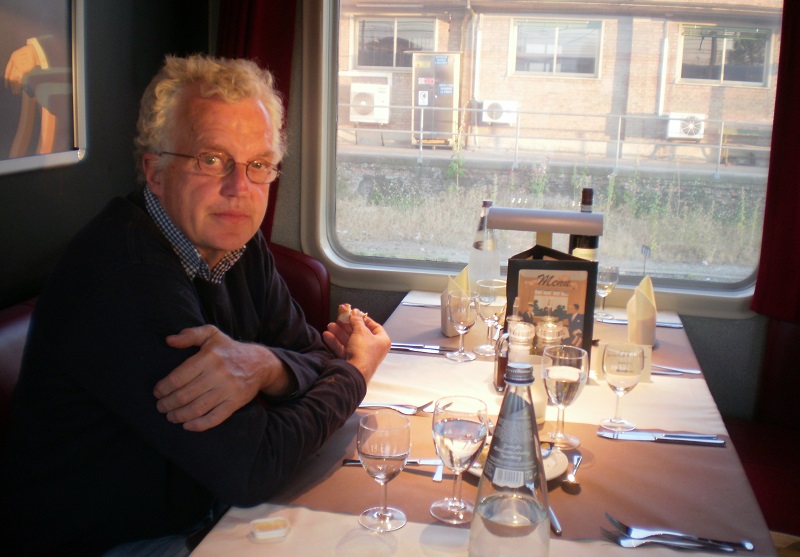 Christian Wolmar is becoming something of a national treasure these days. Just like Peter Snow at election time or Patrick Moore when there’s an eclipse due, Wolmar pops up on the TV and radio bulletins with an instant analysis every time there’s a train crash, a fares rise or a Tube strike.
Christian Wolmar is becoming something of a national treasure these days. Just like Peter Snow at election time or Patrick Moore when there’s an eclipse due, Wolmar pops up on the TV and radio bulletins with an instant analysis every time there’s a train crash, a fares rise or a Tube strike.
But he is more than just a pundit. He loves trains with the enthusiasm of the little boy with the Ian Allan ABC at the end of platform one, but he is also one of the fiercest critics of the modern railway. Train company bosses and transport ministers dread it when Wolmar hoves into sight. You get the message from the titles of his previous books – On the Wrong Line, Down the Tube, Broken Rails. But just as the enemy was bracing itself for another broadside, Christian has sidestepped into different territory.
It seems astonishing that in an age when publishers’ catalogues are filled with histories of just about everything, there is no modern general history of the railways. The last (and rather scholarly) one was Professor Jack Simmons’s The Railways of Britain, orginally published in 1961. That was in the old nationalised days of BR, before we had even heard of Margaret Thatcher, privatisation or even the Beeching report. Since then the railways of Britain have changed almost beyond recognition, with new tilting trains to the north and ultra-fast services through the Channel Tunnel, cutting the London to Paris journey time to just over two hours. In the past dozen years alone, passenger journeys in the UK have risen by 50 per cent.
Wolmar’s history necessarily retreads a lot of ground familiar to every schoolboy – Locomotion, the Rocket, the great engineering feats of Stephenson and Brunel, the world steam speed record of 126mph still held by Sir Nigel Gresley’s Mallard. But he re-investigates it all from a modern perspective. Thus, the Stockton and Darlington Railway, on which it was possible for anyone to run their own train, was the forerunner of our privatised “open access” railway. And high fares are hardly a new phenomenon. When the London to Birmingham line opened in 1838, a single second class single in a primitive wagon cost the equivalent of £67.
Nor was Brunel quite the genius he is reckoned to be. His vacuum-powered railway in south Devon was a costly flop, and his choice of 7ft gauge was based on a technological misunderstanding, costing the Great Western Railway a fortune to convert. One old rail “myth” that Wolmar concludes still to be partly true is the long-held belief the 4ft 8 1/2in “standard gauge” used in Britain is the width of the backside of a horse. Apparently, in ancient Persia, grooves cut in roads to prevent fast-driven chariots from toppling over have been discovered also to be of similar dimensions.
The joy of this book is that it reminds readers what a remarkable invention Britain’s railways were, and how much we have come to take them for granted. They shaped our cities, moulded our industries, helped form our tastes in food and allowed us to take journeys that would have previously seemed implausible. So dramatic was the arrival of a new line in the 19th century that the price of coal dropped instantly by a third. “The pair of rails disappearing over the horizon stood for progress, disaster, the major changes in life, the route to Covent Garden market and Ypres, the way a fiancé paid his first visit to one’s parents and children returned for deathbed leave taking…” as one writer put it.
For most of his 364 pages, the polemical Wolmar manages to stay caged. But he lets slip the leash in the final section, which brings the story up to date. He admires the final period of public ownership leading up to privatisation, first proposed in 1993, and appears to believe that the final days of British Rail were a sort of golden era when managers had developed a proper marketing flair and the railway was “the most efficient and least subsidised in Europe”. He even defends the “curly-edged” sandwich as a myth, pointing out that “BR actually developed the concept of shrink-wrapped sandwiches.”
He is correspondingly (but not always rightly) harsh on the privatised railway, which is fragmented into more than a hundred companies. Most need to make a profit but many still require huge public subsidy. Of course the bureaucracy has been horrendous and accidents such as Ladbroke Grove have been directly attributable to it. But there is another view. If the picture were so bleak, how come consumer demand for rail travel is unmatched in recent memory? And what about businessmen like Richard Branson and Chris Garnett (of the erstwhile GNER), who restored glamour to travelling by train?
For many readers, the account of the development of the railways within their own lifetimes will be the most interesting part of the book. So it is a pity it has such a misleading title – the last steam trains in normal service ran nearly 40 years ago. But this is minor quibble. Fire and Steam takes its place as the definitive railway history and deserves a place on the shelves, not just of train buffs, but of anyone interested in the development of British society. A pity – like so many of the trains which form its subject matter – that it took so long to arrive.
